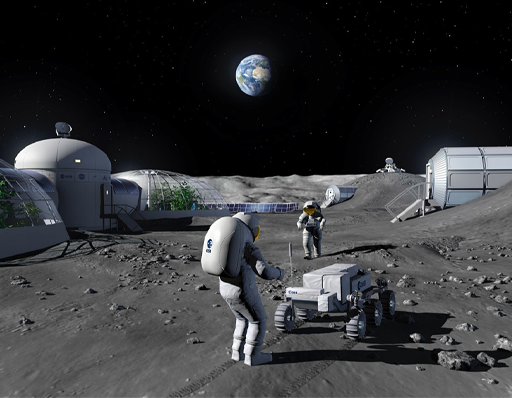Introduction to Planetary Protection
Introduction
We are witnessing a transformation in humanity’s relationship with space. The early decades of the space age were dominated by government-funded, space agency-led exploration programmes and satellite launches for societal need. You will already be familiar with the use of the local space environment for telecommunications (mobile phones and internet), Earth observation (environmental monitoring, e.g., Figure 1, meteorology), transport (air, maritime) and security (surveillance, defence). You may even know a little about the space race to the Moon, the exploration of Mars, or have seen the stunning images from the Hubble or James Webb Space Telescopes.

However, since the dawn of the 21st century, launch technologies have reduced in cost and there is increased participation from smaller, private sector organisations and nations with commercial interests in using the space environment. New sectors such as healthcare, urban development, energy and insurance are all now benefitting from increased access to the space environment and are even setting their sights on exploration of the Solar System, building lunar habitats (e.g., Figure 2) and sending humans to Mars.
With this shift comes growth to the space sector, and projections of its value towards $2 trillion by the mid-2030s are not uncommon, making it an attractive investment for the future. More nations than ever before, including the UK, have ambitions to launch satellites into Earth orbit and beyond from their own territories, supported by commercial investment. But this also comes with risks to the space environment and responsibilities to mitigate these. Such risks are particularly prevalent when considering environments that are, as yet, untouched by humans but might harbour, or have harboured, life.
This course provides an introduction to ‘Planetary Protection’, one of the approaches used to help protect the space environment from contamination from Earth – and protect Earth from potential contamination from space. It is suitable for anyone with an interest in space exploration, including the search for life, and the methods used within the space sector to promote sustainable uses of space.
The first section explores some of the debates that surround the requirement to maintain the space environment as ‘pristine’. Then you will learn about what it is that might disrupt that environment and lead to contamination. You will then move on to explore the governance of space, then learn how governance is put into practice when designing, building and launching spacecraft. Given the growth of the sector, and changing geopolitical objectives, the course will end by you considering the future for planetary protection.

